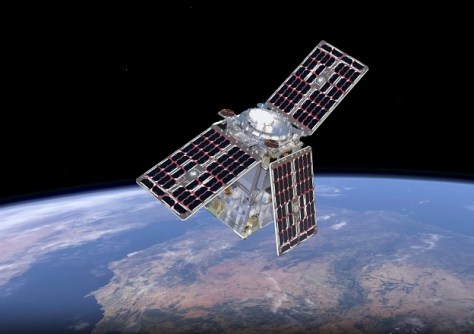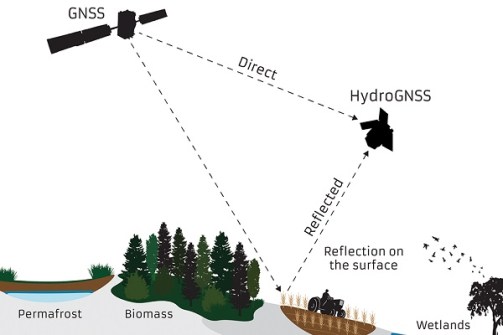
The European Space Agency’s twin, Scout-class HydroGNSS spacecraft are poised for launch from Vandenberg Space Force Base in California.
The satellites will be carried into orbit aboard a SpaceX Falcon 9 rocket on the Transporter-15 flight, which will be a ‘ride share’ with 106 other small satellites.
The launch had been scheduled to take place this morning, 11 November, at 5:18am AEDT, but it appears to have been delayed until the same time on the morning of 19 November.
The HydroGNSS spacecraft are designed to pick up L-band microwave GNSS signals reflected from the Earth’s land- and ice-covered surfaces and oceans, in a process known as GNSS reflectometry.
The technique enables information to be gleaned regarding the characteristics of the surfaces from which the signals are reflected. In the case of HydroGNSS, moisture is the main aim of the game.
“Reaching this milestone is a tremendous achievement, and I am incredibly proud of the entire team behind HydroGNSS,” said Jean-Pascal Lejault, ESA’s HydroGNSS Project Manager.
“Developing ESA’s first Scout mission within such a tight timeframe and budget has required exceptional dedication and ingenuity.
“My special thanks go to our prime contractor Surrey Satellite Technology Ltd in the UK and the ESA project team — their commitment and creativity have made HydroGNSS possible.”
Twin technology
HydroGNSS is the first of ESA’s Scout missions — which need to go from approval to launch within three years — and it is also part of the FutureEO Earth observation program.
Originally, HydroGNSS was to be a single spacecraft, but the decision was made in late 2023 to add a second satellite.
The twins will orbit in the same plane but 180 degrees apart, meaning they will cover the Earth in half the time it would have taken if the mission had remained a single-satellite one.

Each satellite carries a delay Doppler mapping receiver equipped with two antennas: a zenith antenna that tracks direct GNSS signals, and a nadir antenna that collects the reflected signals and processes them into delay Doppler maps.
The orbital altitude will be 500 kilometres, giving a spatial resolution from 2 to 7 kilometres.
The satellites are small, each being only 45 x 45 x 70 cm and with a mass of about 75 kg (prior to launch). They have a planned initial operational lifetime of three years, but with the potential for that to be extended to up to six years.
Surface science
The mission will be used to study four variables, each of which is either classed as an Essential Climate Variable or is closely related to them:
- Soil moisture;
- Freeze–thaw state over permafrost;
- Inundation; and
- Above-ground biomass.
Gathering data on each of these variables is considered vital to gaining an improved understanding of our planet’s water cycle, as well as for agricultural planning, flood prediction, and boosting our knowledge of wetlands, permafrost and forest carbon storage.
“Compared to previous GNSS reflectometry missions, HydroGNSS is unique in that it will have new capabilities and features with dual polarisation, coherent channels and dual-frequency, enabling high coverage and resolution,” said Lejault.
“It will complement other missions sensing soil moisture such as ESA’s SMOS and Biomass, Copernicus Sentinel-1 and NASA’s SMAP.”

For this mission, prime contractor SSTL has partnered with scientists from: Sapienza University of Rome; Tor Vergata University of Rome; the Institute of Space Sciences, Spain; the Institute of Applied Physics, Italy; the Finnish Meteorological Institute; the National Oceanography Centre, UK; the University of Nottingham, UK; and the Vienna University of Technology.
SpaceX’s Transporter-15 flight will involve placing 108 small satellites into orbit, including multiple craft from Planet Labs and ICEYE, and batch deployments of others. The HydroGNSS twins will be the 90th and 103rd deployments in the sequence.






